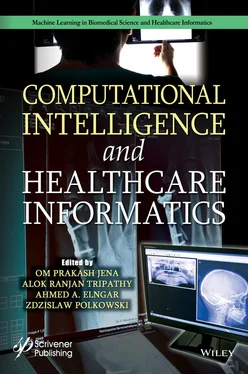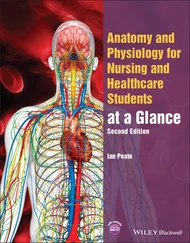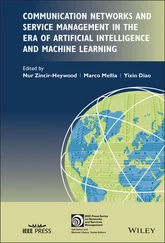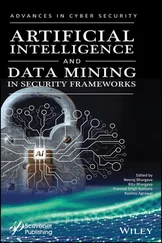1 Cover
2 Title Page
3 Copyright
4 Preface
5 Part I: Introduction 1 Machine Learning and Big Data: An Approach Toward Better Healthcare Services 1.1 Introduction 1.2 Machine Learning in Healthcare 1.3 Machine Learning Algorithms 1.4 Big Data in Healthcare 1.5 Application of Big Data in Healthcare 1.6 Challenges for Big Data 1.7 Conclusion References
6 Part II: Medical Data Processing and Analysis 2 Thoracic Image Analysis Using Deep Learning 2.1 Introduction 2.2 Broad Overview of Research 2.3 Existing Models 2.4 Comparison of Existing Models 2.5 Summary 2.6 Conclusion and Future Scope References 3 Feature Selection and Machine Learning Models for High-Dimensional Data: State-of-the-Art 3.1 Introduction 3.2 Types of Feature Selection 3.3 Machine Learning and Deep Learning Models 3.4 Real-World Applications and Scenario of Feature Selection 3.5 Conclusion References 4 A Smart Web Application for Symptom-Based Disease Detection and Prediction Using State-of-the-Art ML and ANN Models 4.1 Introduction 4.2 Literature Review 4.3 Dataset, EDA, and Data Processing 4.4 Machine Learning Algorithms 4.5 Work Architecture 4.6 Conclusion References 5 Classification of Heart Sound Signals Using Time-Frequency Image Texture Features 5.1 Introduction 5.2 Related Work 5.3 Theoretical Background 5.4 Proposed Algorithm 5.5 Experimental Results 5.6 Conclusion References 6 Improving Multi-Label Classification in Prototype Selection Scenario 6.1 Introduction 6.2 Related Work 6.3 Methodology 6.4 Performance Evaluation 6.5 Experiment Data Set 6.6 Experiment Results 6.7 Conclusion References 7 A Machine Learning–Based Intelligent Computational Framework for the Prediction of Diabetes Disease 7.1 Introduction 7.2 Materials and Methods 7.3 Machine Learning Classification Hypotheses 7.4 Classifier Validation Method 7.5 Performance Evaluation Metrics 7.6 Results and Discussion 7.7 Conclusion References 8 Hyperparameter Tuning of Ensemble Classifiers Using Grid Search and Random Search for Prediction of Heart Disease 8.1 Introduction 8.2 Related Work 8.3 Proposed Method 8.4 Experimental Outcomes and Analyses 8.5 Conclusion References 9 Computational Intelligence and Healthcare Informatics Part III—Recent Development and Advanced Methodologies 9.1 Introduction: Simulation in Healthcare 9.2 Need for a Healthcare Simulation Process 9.3 Types of Healthcare Simulations 9.4 AI in Healthcare Simulation 9.5 Conclusion References 10 Wolfram’s Cellular Automata Model in Health Informatics 10.1 Introduction 10.2 Cellular Automata 10.3 Application of Cellular Automata in Health Science 10.4 Cellular Automata in Health Informatics 10.5 Health Informatics–Deep Learning–Cellular Automata 10.6 Conclusion References
7 Part III: Machine Learning and COVID Prospective 11 COVID-19: Classification of Countries for Analysis and Prediction of Global Novel Corona Virus Infections Disease Using Data Mining Techniques 11.1 Introduction 11.2 Literature Review 11.3 Data Pre-Processing 11.4 Proposed Methodologies 11.5 Experimental Results 11.6 Conclusion and Future Scopes References 12 Sentiment Analysis on Social Media for Emotional Prediction During COVID-19 Pandemic Using Efficient Machine Learning Approach 12.1 Introduction 12.2 Literature Review 12.3 System Design 12.4 Result and Discussion 12.5 Conclusion References 13 Primary Healthcare Model for Remote Area Using Self-Organizing Map Network 13.1 Introduction 13.2 Background Details and Literature Review 13.3 Methodology 13.4 Results and Discussion 13.5 Conclusion References 14 Face Mask Detection in Real-Time Video Stream Using Deep Learning 14.1 Introduction 14.2 Related Work 14.3 Proposed Work 14.4 Results and Evaluation 14.5 Conclusion References 15 A Computational Intelligence Approach for Skin Disease Identification Using Machine/Deep Learning Algorithms 15.1 Introduction 15.2 Research Problem Statements 15.3 Dataset Description 15.4 Machine Learning Technique Used for Skin Disease Identification 15.5 Result and Analysis 15.6 Conclusion References 16 Asymptotic Patients’ Healthcare Monitoring and Identification of Health Ailments in Post COVID-19 Scenario 16.1 Introduction 16.2 Material Properties and Design Specifications 16.3 Experimental Methods and Materials 16.4 Simulation Results 16.5 Conclusion 16.6 Abbreviations and Acronyms References 17 COVID-19 Detection System Using Cellular Automata–Based Segmentation Techniques 17.1 Introduction 17.2 Literature Survey 17.3 Proposed Methodology 17.4 Results and Discussion 17.5 Conclusion References 18 Interesting Patterns From COVID-19 Dataset Using Graph-Based Statistical Analysis for Preventive Measures 18.1 Introduction 18.2 Methods 18.3 GSA Model: Graph-Based Statistical Analysis 18.4 Graph-Based Analysis 18.5 Machine Learning Techniques 18.6 Exploratory Data Analysis 18.7 Conclusion 18.8 Limitations Acknowledgments Abbreviations References
8 Part IV: Prospective of Computational Intelligence in Healthcare 19 Conceptualizing Tomorrow’s Healthcare Through Digitization 19.1 Introduction 19.2 Importance of IoMT in Healthcare 19.3 Case Study I: An Integrated Telemedicine Platform in Wake of the COVID-19 Crisis 19.4 Case Study II: A Smart Sleep Detection System to Track the Sleeping Pattern in Patients Suffering From Sleep Apnea 19.5 Future of Smart Healthcare 19.6 Conclusion References 20 Domain Adaptation of Parts of Speech Annotators in Hindi Biomedical Corpus: An NLP Approach 20.1 Introduction 20.2 Review of Related Literature 20.3 Scope and Objectives 20.4 Methodological Design 20.5 Evaluation 20.6 Issues 20.7 Conclusion and Future Work Acknowledgements References 21 Application of Natural Language Processing in Healthcare 21.1 Introduction 21.2 Evolution of Natural Language Processing 21.3 Outline of NLP in Medical Management 21.4 Levels of Natural Language Processing in Healthcare 21.5 Opportunities and Challenges From a Clinical Perspective 21.6 Openings and Difficulties From a Natural Language Processing Point of View 21.7 Actionable Guidance and Directions for the Future 21.8 Conclusion References
9 Index
10 End User License Agreement
1 Chapter 1 Figure 1.1 Machine learning and big data analysis in healthcare. Figure 1.2 Application of ML in healthcare. Figure 1.3 The types of machine learning algorithm. Figure 1.4 Sources of big data in healthcare. Figure 1.5 Applications of big data in healthcare.
2 Chapter 2 Figure 2.1 Broad view of existing research. Figure 2.2 Types of chest pathologies.
3 Chapter 3 Figure 3.1 (a) This what the normal data looks like. (b) “Big p and small n” pro... Figure 3.2 Feature selection process. Figure 3.3 Taxonomy of feature selection.Figure 3.4 Taxonomy of deep learning models.
4 Chapter 4Figure 4.1 Overview of the processes involved in building ML models.Figure 4.2 Machine Learning vs. Deep Learning workflow process.Figure 4.3 Overview of an Artificial Neural Network.Figure 4.4 The description of the raw dataset showing the first five rows.Figure 4.5 The code snippet showing the data processing of the attributes such a...Figure 4.6 The description of the cleaned and processed dataset showing the firs...Figure 4.7 Boxplot showing number of disease occurrences.Figure 4.8 Ten highest reported diseases.Figure 4.9 Ten highest reported symptoms.Figure 4.10 The code snippet of the label encoding and one hot encoding process ...Figure 4.11 List of the implemented algorithms while building the model. MLP pro...Figure 4.12 Work architecture of the proposed solution.Figure 4.13 The web application to predict disease based on symptoms.Figure 4.14 The user can input multiple symptoms at a time and get accurate pred...
5 Chapter 5Figure 5.1 PCG signal in time-frequency representation before and after filtered...Figure 5.2 (a) Standard spectrogram for normal sample. (b) for standard spectrog...Figure 5.3 (a) Mel-spectrogram for normal sample. (b) Mel-spectrogram for abnorm...Figure 5.4 (a) IIR-CQT spectrogram for normal sample. (b) IIR-CQT spectrogram fo...Figure 5.5 Kirschmask in eight different directions [12].Figure 5.6 Algorithm for the proposed heart sound classification system.Figure 5.7 Confusion matrix for dense CLBP method.
Читать дальше












